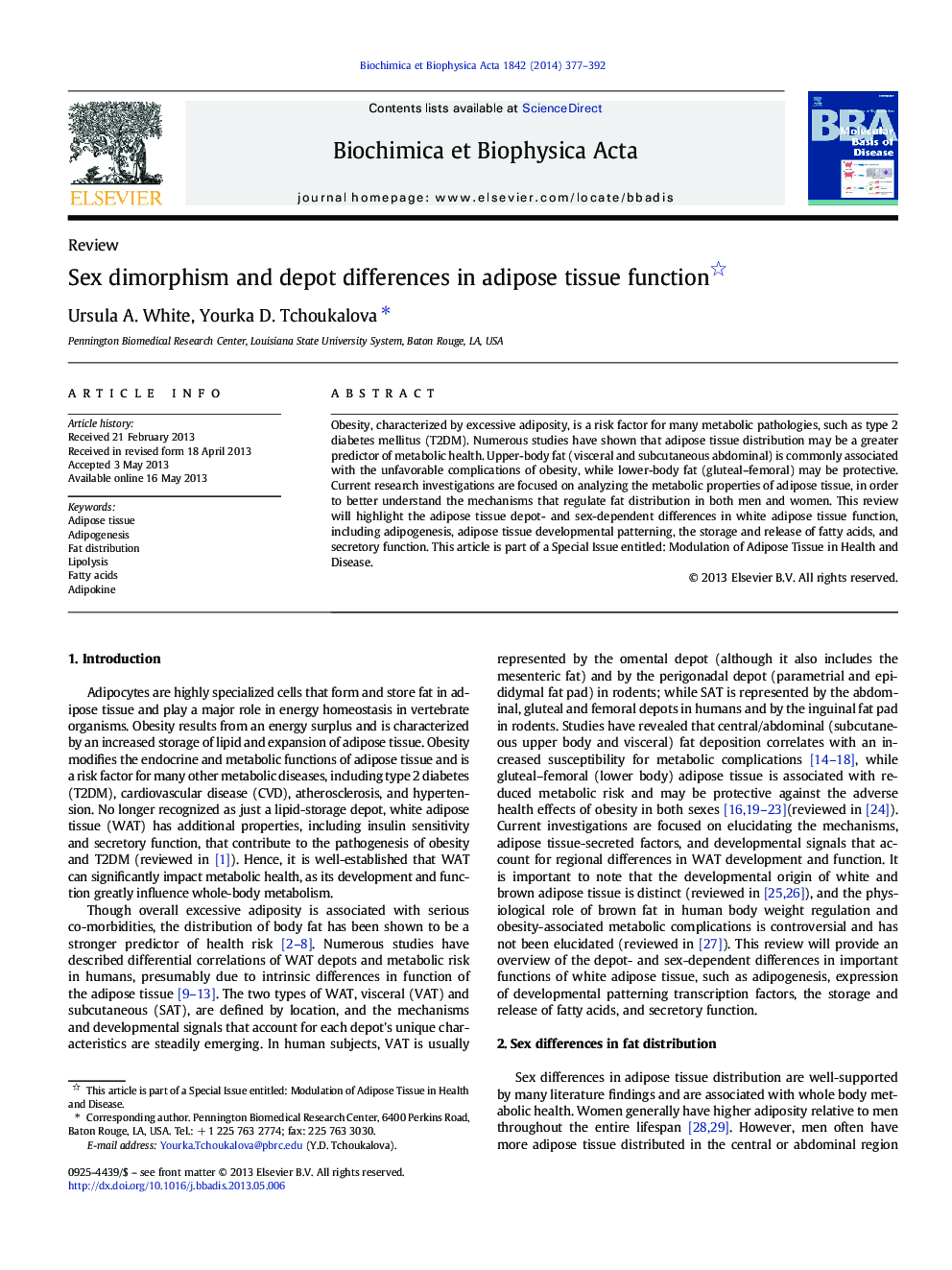| Article ID | Journal | Published Year | Pages | File Type |
|---|---|---|---|---|
| 8260410 | Biochimica et Biophysica Acta (BBA) - Molecular Basis of Disease | 2014 | 16 Pages |
Abstract
Obesity, characterized by excessive adiposity, is a risk factor for many metabolic pathologies, such as type 2 diabetes mellitus (T2DM). Numerous studies have shown that adipose tissue distribution may be a greater predictor of metabolic health. Upper-body fat (visceral and subcutaneous abdominal) is commonly associated with the unfavorable complications of obesity, while lower-body fat (gluteal-femoral) may be protective. Current research investigations are focused on analyzing the metabolic properties of adipose tissue, in order to better understand the mechanisms that regulate fat distribution in both men and women. This review will highlight the adipose tissue depot- and sex-dependent differences in white adipose tissue function, including adipogenesis, adipose tissue developmental patterning, the storage and release of fatty acids, and secretory function. This article is part of a Special Issue entitled: Modulation of Adipose Tissue in Health and Disease.
Related Topics
Life Sciences
Biochemistry, Genetics and Molecular Biology
Ageing
Authors
Ursula A. White, Yourka D. Tchoukalova,
